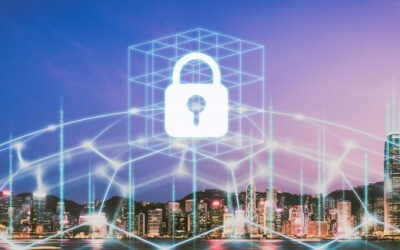Unveiling the Power of Microsegmentation: Elevating Visibility, Control, and Security
In the intricate landscape of cybersecurity, the concept of microsegmentation emerges as a strategic shield, offering unparalleled visibility, control, and security for the often-neglected East-West traffic. Let’s delve into the essence of microsegmentation and explore its common use cases, unraveling the transformative impact it can have on your cybersecurity posture.
Microsegmentation Defined
Not unlike a safety deposit box in a bank – anyone can walk into a bank, but they can’t access your safety deposit box – microsegmentation is a security strategy that involves dividing a network into smaller, more manageable segments to enhance control and limit potential attack surfaces. Unlike traditional perimeter-based security, microsegmentation focuses on securing lateral, or East-West, traffic within the network, providing granular control over communication between workloads, users or things.

Common Microsegmentation Use Cases
Microsegmentation can be utilized across varying use cases, but here are some common ones we often see…
- Workload Segregation: Segregating production workloads from development environments reduces the risk of unauthorized access or data breaches during the development phase.
- Application Security: Enhancing the security of key applications by isolating them within specific segments, safeguarding critical assets from potential threats.
- DMZ Security Posture: Strengthening the security posture of the “DMZ” (Demilitarized Zone), a crucial network segment that acts as a buffer between the internal network and the external world.
- Visibility Enhancement: Gaining comprehensive visibility into how server workloads, users, or things communicate allows organizations to monitor and analyze traffic patterns, aiding in threat detection and prevention.
- Ransomware Risk Reduction: Microsegmentation acts as a robust defense mechanism, reducing the risk of ransomware attacks by limiting lateral movement within the network.
- Isolation for IoT Devices: Ensuring isolation between Internet of Things (IoT) devices and user devices prevents potential threats originating from compromised IoT endpoints.
- Blast Radius Limitation: Microsegmentation limits the blast radius in the event of a security incident, confining the impact to a single user, device, virtual machine, or application.
How ANM Can Help with Microsegmentation in Your Environment
Navigating the realm of microsegmentation requires a strategic approach, and our expertise is here to guide you every step of the way.
- Solution Evaluation: Our team assists in evaluating microsegmentation solutions to align with your specific organizational needs, ensuring optimal effectiveness and efficiency.
- Design Workshop: Collaboratively design a microsegmentation strategy tailored to your network architecture, addressing unique challenges and optimizing security.
- Proof of Concept (POC): Test the waters with a Proof of Concept to validate the feasibility and benefits of microsegmentation in a controlled environment.
- Pilot Environments: Implement microsegmentation in pilot environments, allowing for real-world testing and fine-tuning before broader deployment.
In the dynamic landscape of cybersecurity, microsegmentation stands as a formidable ally. Elevate your network security with enhanced visibility, control, and security measures, fortified by a right-fit microsegmentation strategy crafted with precision and expertise.

JR Garcia
ANM Solutions Engineering Director
JR Garcia is the Director of Solutions Engineering at ANM. With over two years of experience in this role, JR leads solutions engineering teams in Arizona, New Mexico, and Texas, focusing on network, data center, and security architectures. Prior to joining ANM he was a solutions engineer at Cisco Systems, and worked in Product Development for a service provider in Anchorage, AK. He is a CCIE and holds degrees in Telecommunications and Business Management.
Keeping Your Data Safe While Working from Home: Essential Tips
Working from home has become the new norm for many professionals. But while remote work offers flexibility and convenience, it also introduces unique cybersecurity challenges. Protecting your data is crucial to maintaining productivity and safeguarding sensitive...
Considerations when Implementing Disaster Recovery
Implementing a Disaster Recovery (DR) solution is critical for ensuring business continuity in the event of an unforeseen disaster. Whether it's a natural calamity, cyberattack, or system failure, having a robust DR plan can mean the difference between a minor setback...
Understanding the Fundamentals of SASE
Today’s enterprises are rapidly embracing cloud technology and remote workforces, and traditional network architectures are struggling to keep up. As a result, Secure Access Service Edge (SASE) has emerged as a transformative framework that merges network security...


